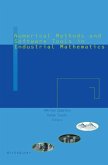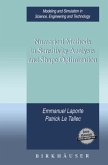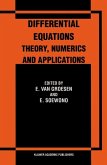In recent years kinetic theory has developed in many areas of the physical sciences and engineering, and has extended the borders of its traditional fields of application. New applications in traffic flow engineering, granular media modeling, and polymer and phase transition physics have resulted in new numerical algorithms which depart from traditional stochastic Monte--Carlo methods.
This monograph is a self-contained presentation of such recently developed aspects of kinetic theory, as well as a comprehensive account of the fundamentals of the theory. Emphasizing modeling techniques and numerical methods, the book provides a unified treatment of kinetic equations not found in more focused theoretical or applied works.
The book is divided into two parts. Part I is devoted to the most fundamental kinetic model: the Boltzmann equation of rarefied gas dynamics. Additionally, widely used numerical methods for the discretization of the Boltzmann equation are reviewed: the Monte--Carlo method, spectral methods, and finite-difference methods. Part II considers specific applications: plasma kinetic modeling using the Landau--Fokker--Planck equations, traffic flow modeling, granular media modeling, quantum kinetic modeling, and coagulation-fragmentation problems.
"Modeling and Computational Methods of Kinetic Equations" will be accessible to readers working in different communities where kinetic theory is important: graduate students, researchers and practitioners in mathematical physics, applied mathematics, and various branches of engineering. The work may be used for self-study, as a reference text, or in graduate-level courses in kinetic theory and its applications.
This monograph is a self-contained presentation of such recently developed aspects of kinetic theory, as well as a comprehensive account of the fundamentals of the theory. Emphasizing modeling techniques and numerical methods, the book provides a unified treatment of kinetic equations not found in more focused theoretical or applied works.
The book is divided into two parts. Part I is devoted to the most fundamental kinetic model: the Boltzmann equation of rarefied gas dynamics. Additionally, widely used numerical methods for the discretization of the Boltzmann equation are reviewed: the Monte--Carlo method, spectral methods, and finite-difference methods. Part II considers specific applications: plasma kinetic modeling using the Landau--Fokker--Planck equations, traffic flow modeling, granular media modeling, quantum kinetic modeling, and coagulation-fragmentation problems.
"Modeling and Computational Methods of Kinetic Equations" will be accessible to readers working in different communities where kinetic theory is important: graduate students, researchers and practitioners in mathematical physics, applied mathematics, and various branches of engineering. The work may be used for self-study, as a reference text, or in graduate-level courses in kinetic theory and its applications.
From the reviews: "Kinetic models can be used to describe the behaviour of gases and fluids in applications ... . The structure is different from a classical book, as it is actually a collection of scientific papers. ... it is recommended primarily for mathematicians with a high interest in physics, or for theoretical physicists, both of which at least at graduate level, but for those who understand the presented ideas, it might be a highly valuable tool or an inspiration for further research." (Simon Seichter, Simulation News Europe, Vol. 16 (1), 2006)








